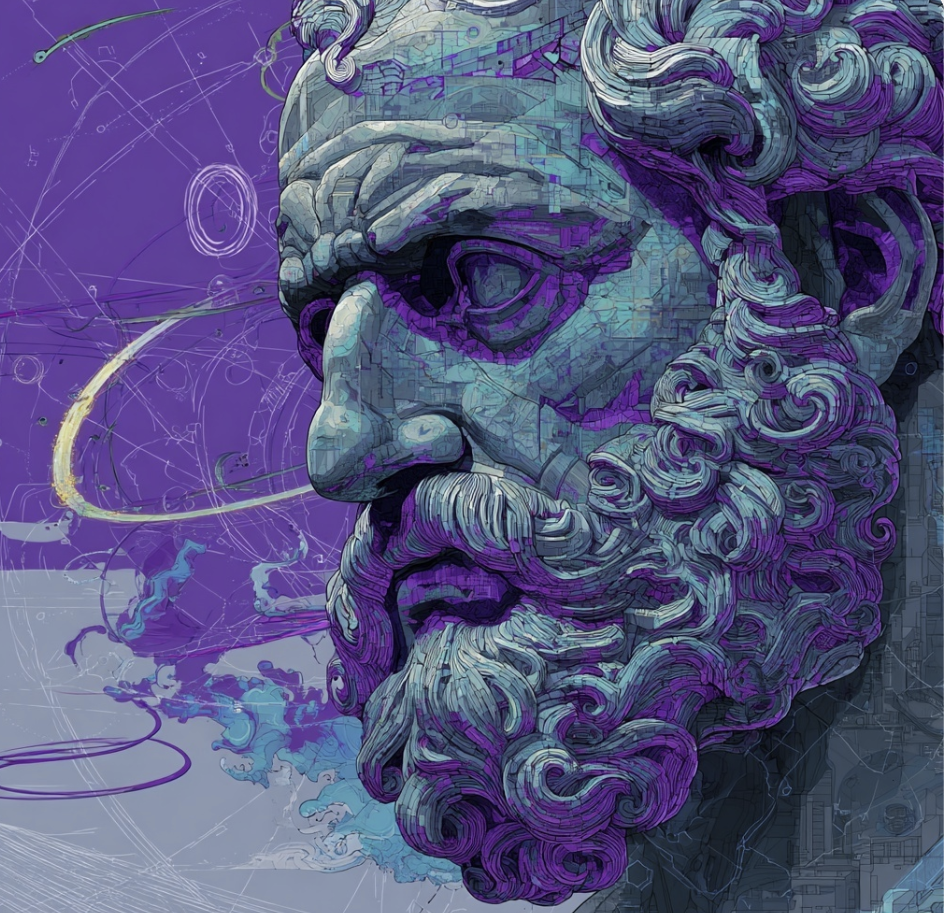
Heraclitus — The Philosopher of Fire and Flux (c. 535–475 BCE)
A cryptic mind of ancient Greece who saw the world as ceaseless motion — a universe of fire, tension, opposites, and transformation.
Life and the Enigmatic Character
Heraclitus was born in Ephesus, a thriving Ionian city, but preferred the solitude of inquiry over public life. Ancient writers depict him as aloof, irritable, and fiercely independent — a thinker who distrusted crowds and preferred the company of nature and the quiet order of his own reflections.
He came from an aristocratic family, yet he rejected political authority. His surviving work is a collection of fragments so compressed and poetic that ancient readers called him “The Obscure.” To him, truth wasn’t a list of doctrines but something glimpsed through riddles, tension, and paradox.
“The nature of things is in the habit of concealing itself.”
Everything Flows
Heraclitus is best known for his doctrine of perpetual change — the idea that reality is not fixed but always becoming. The world, he said, is like a river whose waters shift moment to moment. Stability is always temporary, always an illusion.
He captured this in one of philosophy’s most famous images: a person cannot step twice into the same river because new waters are always flowing in. Life, identity, and the cosmos themselves are dynamic, not static.
“All things flow.”
Fire as the Principle of the Cosmos
For Heraclitus, fire was not just a physical element — it was a symbol for the restless, self-transforming energy of the universe. Fire consumes and creates, destroys and renews. Its flickering motion mirrored the cosmic process itself.
He imagined the world in cycles, burning up and re-forming through patterns governed by a hidden order. Fire, in this sense, was both literal and metaphoric: the heartbeat of change, the pulse of nature.
“This cosmos was not made by gods or men, but always was and is and will be: an ever-living fire.”
Tension, Opposites, and the Hidden Harmony
Heraclitus believed that conflict was not a flaw in the world — it was its engine. Opposites create balance, and struggle produces structure. Day and night, war and peace, fullness and emptiness: these tensions are not enemies but partners in a single cosmic dance.
He described this through the metaphor of the bow and the lyre: instruments whose strings must be pulled into tension to create power and harmony. Life works the same way — unity is born from contrast.
“The hidden harmony is stronger than the visible.”
Logos — The Structure Beneath Chaos
Although the world appears chaotic, Heraclitus believed it obeys a deeper order he called logos — a rational principle underlying all things. Most people, he said, fail to perceive this order because they cling to rigid assumptions or chase fleeting desires.
To live wisely is to attune oneself to the logos, recognizing the flow and embracing the rhythm of change rather than resisting it.
“Listening not to me but to the logos, it is wise to agree that all things are one.”
Legacy
Heraclitus’s thought influenced Stoicism, later metaphysics, early Christian writers, and modern philosophy from Hegel to Heidegger. His fragments inspired scientists, poets, and mystics alike. He remains unparalleled in weaving together cosmology, psychology, and metaphor into a single vision of a dynamic universe.
Of all the ancient thinkers, he stands as the philosopher of motion — the one who insisted that becoming is more fundamental than being, and that wisdom lies in understanding the pattern within the change.
“There is nothing permanent except change.”
CivilSimian.com created by AxiomaticPanic, CivilSimian, Kalokagathia
